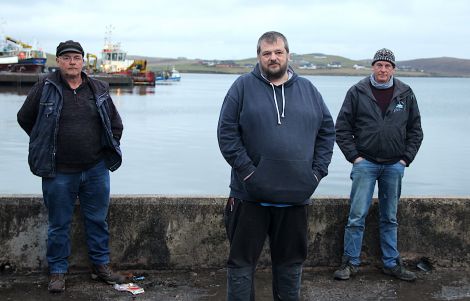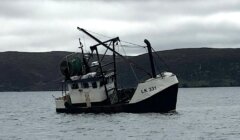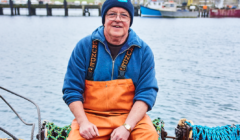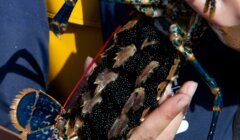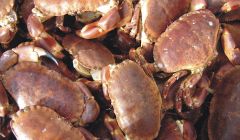Marine / Shellfish men aggrieved at way the sector is managed locally
Shetland Shellfish Management Organisation (SSMO) defends its stance and says accusations are false
A GROUP of disgruntled fishermen are challenging the local inshore shellfish fishery organisation – calling for it to become more transparent and accountable.
They claim the Shetland Shellfish Management Organisation (SSMO) has become a “closed shop”, preventing new fishermen from entering the inshore fishery sector.
They further allege that the organisation, created more than 20 years ago, is acting against the spirits of its founders by allowing fishing permits to change hands for as much as £40,000.
The SSMO has strongly defended its approach to managing the inshore waters by saying new entrance licences were being issued regularly, though application processes are usually oversubscribed.
The organisation is tasked with ensuring the long-term biological, environmental and economic sustainability of the local shellfish sector.
Some of the group of around 15 men who feel mistreated by the SSMO met in Scalloway on Monday night to vent their frustration after an exchange of e-mails produced “unsatisfactory” responses to their many questions.
Group spokesman Gary Smith said he had unsuccessfully been trying to obtain an SSMO licence for the last 14 years, with no explanation given why his applications have been turned down.
“They hide behind the science, but don’t share the science,” he said, adding that all they are asking for is a level playing field.
Arnold Goodlad said he handed back his licence in the early 2000s on the understanding that he would be able to get a new one once he wanted to get back into the industry, but other than a licence to catch queen scallops (queenies) he has been unsuccessful in his efforts.
Smith said all men in the group had different grievances with the way the SSMO is managed, and alleges that members are looking after their own interests rather than those of the whole inshore sector.
Become a member of Shetland News
The group said that the number of fishing permits dropped from 160 to now just over 100, thereby concentrating fishing rights in fewer hands and making it near impossible to young men to enter the industry.
Shetland is the only region in Scotland that has been granted a regulating order allowing a locally controlled organisation to manage its own inshore shellfish sector out to the six miles limit to guarantee a sustainable fishery.
Since 2000, the local quota is managed by a board of eleven members, including boat owners, representatives from community councils, the Shetland Fishermen’s Association and the shellfish processing sector.
The SSMO can close fisheries to allow stock to recover, and it sets minimum landing sizes for brown crab, velvet crab, lobster, scallops and buckies, and regulates the number of creels any vessel can use.
SSMO has Marine Stewardship Council (MSC) accreditation for three of its fisheries: velvet crab, brown crab and dredged king scallops.
But critics say that some vessels with a licence fish with more than 600 creels and that “there are unmarked creels [ghost creels] everywhere”, an issue that has been acknowledged by the SSMO.
SSMO chairman Ian Walterson rejected the accusation that the organisation is a closed shop as “totally false”.
“An illustration of this is that during recent years nine new entrant licences have been issued, plus another 15 new entrants to the shellfish sector have been allowed through the succession system with five more currently in the process of doing so,” he said.
“Whenever the new entrant process is carried out it is always over subscribed in relation to the number of licences to be issued and those who are unsuccessful are understandably disappointed.
“For example, a recent new entrant licensing round to issue five licences had 52 applicants, this meant that there were 47 who were not successful on that occasion.
“The majority of unsuccessful applicants accept that this is how the process works, but there are sometimes a few who cannot accept that they did not get a shellfish licence even though the procedure is explained to them.”
He added that the number of licenses issued by the organisation had gone down to reflect the fact the vessel sizes and fishing capabilities had gone up.
“At the time of introduction in 1999 when the Shetland Regulating Order gained all party approval at the Scottish Parliament, fishermen who applied for a SSMO licence were granted one,” Walterson said.
“This resulted in around 160 licences being issued to fishermen who had a previous record of shellfish landings.
“The current total number of licences today is a reflection on the fact that most replacement vessels over the years have been of a more modern design for safety and comfort of the crew and therefore also have a greater catching capacity.
“The total number of licenced vessels and the overall catching capacity is balanced against shellfish stock assessment data compiled for the SSMO by the NAFC Marine Centre who obtain the figures from log sheet returns provided by the fishermen.”
In an e-mail exchange with the group, seen by Shetland News, SSMO also stated that it was aware of the fact that permits were changing hands for large sums of money but it had “no remit to interfere in transactions between two private individuals”.
The SSMO further acknowledged that it has neither mandates or resources to enforce the law against unlicensed fishing in within the six-mile limit.
“Complaints should be taken to the Fisheries Office [Marine Scotland],” they said.
“Compliance would require more resources from the Scottish Government. In the meantime, the government is seeking to put cameras on scallop and possible creel vessels to tackle the problem.”
Become a member of Shetland News
Shetland News is asking its many readers to consider paying for membership to get additional features and services: -
- Remove non-local ads;
- Bookmark posts to read later;
- Exclusive curated weekly newsletter;
- Hide membership messages;
- Comments open for discussion.
If you appreciate what we do and feel strongly about impartial local journalism, then please become a member of Shetland News by either making a single payment, or setting up a monthly, quarterly or yearly subscription.






